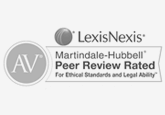Combating Money Laundering: The Efforts of U.S. Banks
The issue of money laundering poses a significant threat to the integrity of financial systems worldwide. In the United States, banks play a pivotal role in combating this illicit activity through a combination of regulatory compliance, advanced technology, and collaborative efforts with governmental agencies. This text aims to elucidate the multifaceted strategies employed by U.S. banks to address and mitigate money laundering risks.
Regulatory Compliance
One of the primary mechanisms through which U.S. banks combat money laundering is adherence to stringent regulatory frameworks. The cornerstone of these efforts is the Bank Secrecy Act (BSA) of 1970, which mandates financial institutions to maintain robust anti-money laundering (AML) programs. These programs are designed to detect and report suspicious activities, thereby preventing the misuse of financial systems for illicit purposes.
The USA PATRIOT Act, enacted in response to the events of September 11, 2001, further strengthened AML regulations by requiring banks to implement enhanced due diligence procedures. This includes verifying the identity of customers, monitoring transactions for unusual activity, and maintaining comprehensive records. Banks are also required to file Suspicious Activity Reports (SARs) with the Financial Crimes Enforcement Network (FinCEN), which plays a crucial role in identifying and investigating potential money laundering activities.
Advanced Technology
In addition to regulatory compliance, U.S. banks leverage advanced technological solutions to enhance their AML efforts. Artificial intelligence (AI) and machine learning algorithms are increasingly employed to analyze vast amounts of transaction data, identify patterns indicative of money laundering, and flag suspicious activities in real-time. These technologies enable banks to detect and respond to potentially illicit activities with greater accuracy and efficiency.
Moreover, blockchain technology is being explored as a tool to enhance transparency and traceability in financial transactions. By providing an immutable record of transactions, blockchain can help banks verify the legitimacy of funds and reduce the risk of money laundering.
Collaborative Efforts
U.S. banks also recognize the importance of collaboration in the fight against money laundering. Financial institutions work closely with regulatory bodies, law enforcement agencies, and international organizations to share information and coordinate efforts. The Financial Action Task Force (FATF), an intergovernmental body, sets global standards for AML practices and facilitates cooperation among member countries.
Public-private partnerships, such as the Financial Crimes Enforcement Networks (FinCEN) Bank Secrecy Act Advisory Group, provide a platform for banks and governmental agencies to discuss emerging threats, share best practices, and develop innovative solutions. These collaborative efforts are essential in creating a unified front against money laundering.
Conclusion
In conclusion, U.S. banks employ a comprehensive approach to combat money laundering, encompassing regulatory compliance, advanced technology, and collaborative efforts. By adhering to stringent regulations, leveraging cutting-edge technologies, and fostering partnerships with governmental and international entities, banks are better equipped to detect, prevent, and mitigate the risks associated with money laundering. These concerted efforts are vital in safeguarding the integrity of the financial system and maintaining public trust in financial institutions.





